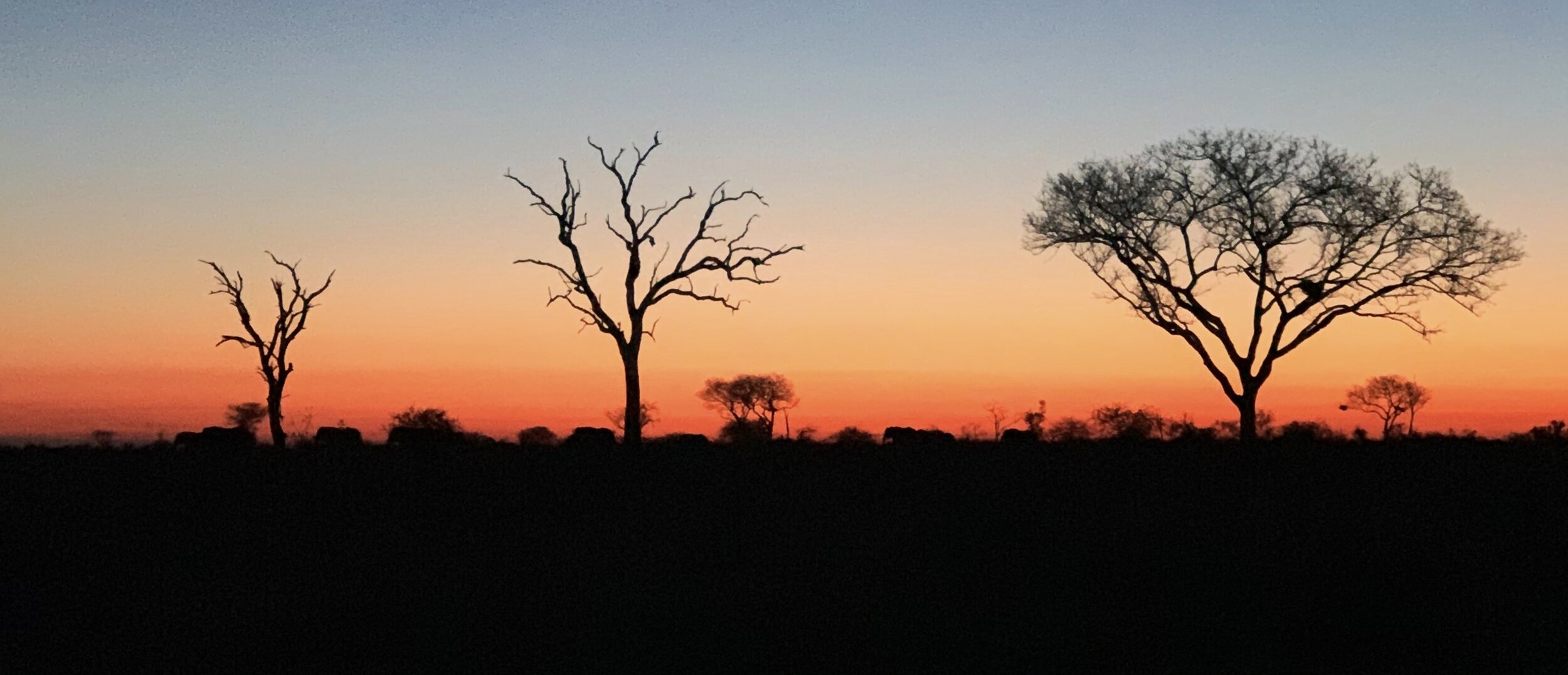Skytrails
/By Leonard Yip:
Kruger National Park, South Africa
June 2019
We spend the day in search of lionesses – all afternoon in the jeep, through the golden dust clouds of the Sabi Sands, out onto the low bareness of the bushveldt at the height of its winter.
Jess, our ranger at the wheel of the jeep, tears off-road across brambles and dirt ditches, stopping every so often where bush gives way to sand. The Shangaan tracker with us, aptly named Advice, dismounts here: tracing the padded footfalls of the big cats in that pliant, wind-dusted earth, ghosting into the acacias and re-appearing again with a new set of directions in which to chase.
We never do see the lionesses that day, but the journey back to the lodge is marked with a quieter wonder. The sun sets and sinks and kisses the earth in fire, composing the leafless branches of fever trees into sharp silhouettes. Dark shapes of elephant herds in the distance move along the horizon line. In between the cold clarity of moonrise and the sun’s final dip beneath the Drakensberg mountains, there is a moment that seems to hang long and suspended in the clear air. Unprepared for the quickness of nightfall in the bush, I crane my neck upwards and the oncoming dark smothers me in its sudden descent: an entire sky dissolving to black.
Staring into its enormity, I lose my sense of perspective as it settles across the ends of the veldt. I sit in mute, fearful mesmerisation, this vast and unknowable thing erasing scale and obliterating our field of vision. Landmarks disappear and the roads before us are swallowed up into an inky chasm. My stomach lurches and I feel like I’m falling, leaping upwards into the infinity of everything I do not know. I reach reflexively for the guardrails of the jeep.
This uncanny, reversed vertigo clears only when the stars wink themselves into existence. The shapes of the veldt resolve themselves again faintly by the pinpricks of light. Cloud-like, the galaxy begins to pattern itself across the sky, looking for all the world like a rippling reflection of the road below us. Jess slows the jeep and leaves the lights dead. She and Advice teach us to navigate by the stars, locating the Southern Cross, mapping a southward bearing from where its lines bisect along the axis. They tell us the stories and folktales of the Shangaan bushmen – that the Milky Way is thought to be the trail walked by the spirits of their ancestors, and how a girl once threw the sparks from an ember’s core deep into the night sky, where they gathered into the constellations that guide the sojourner and the wayfarer home.
Sat there listening, I am amazed at how acts of imagination become so closely tied to acts of pathfinding. I think of how writers and etymologists have followed the origins of the word ‘learn’ to the Old English ‘leornian’, meaning ‘to get knowledge’. The imprint of its lilting consonants and rolling vowels on our tongues trails even further back to the Proto-Germanic ‘liznojan’; to find a track. Learning, then, carries the same sense as following a track, making known the unknown through the tracing of one sand-swept footprint at a time. Even across cultures, how we make meaning of the world so often finds its way back to the very act of finding a way – galaxies becoming ground, stars turning to soil, walking and tracking as learning and understanding. Garnette Cardogan once wrote that ‘walking is, after all, interrupted falling.’ His words spring back to my mind as Jess and Advice map out the night sky for me, the resonance of trailblazing disrupting my sensation of upwards descent.
Advice turns on the searchlight, and the beam lances hot and bright ahead of us. The jeep trundles along the trail home. The air goes wild with the noise of the bush coming to life, and hyenas navigate by lone stars rising to their shadowed kills. Somewhere, lions roar into the night.
***
Leonard Yip is a Singaporean writer with an interest in landscape, people, place and faith - and often the intersections where these meet. He recently graduated with an MPhil in Modern and Contemporary Literature from the University of Cambridge, and his work can be found at leonardywy.wordpress.com.


